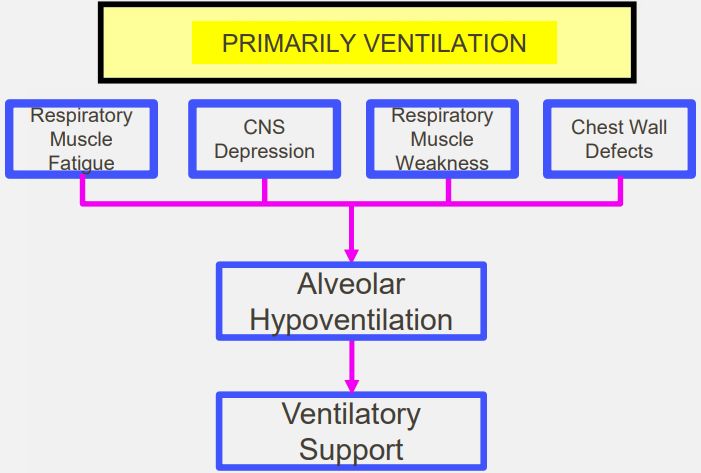PULMONARY PHYSIOLOGY-HYPOVENTILATION CAUSES
SUMMARY
1. Airway obstruction: can be proximal as in laryngeal edema or foreign body inhalation, or distal as in bronchial asthma or chronic obstructive pulmonary disease (COPD).
2. Impaired respiratory drive: as in cases of deep sedation or coma.
3. Restricted movement of the chest wall: as in obesity hypoventilation syndrome, circumferential burns, massive ascites, or ankylosing spondylitis.
4. Neuromuscular diseases: such as myasthenia gravis, muscular dystrophy, amyotrophic lateral sclerosis, high spinal injuries, polio, drugs or phrenic nerve injuries.

Reference(s)
Wilkinson, I., Furmedge, D. and Sinharay, R. (2017). Oxford handbook of clinical medicine. Oxford: Oxford University Press. Get it on Amazon.
Feather, A., Randall, D. and Waterhouse, M. (2020). Kumar And Clark’s Clinical Medicine. 10th ed. S.L.: Elsevier Health Sciences. Get it on Amazon.
Hannaman, R. A., Bullock, L., Hatchell, C. A., & Yoffe, M. (2016). Internal medicine review core curriculum, 2017-2018. CO Springs, CO: MedStudy.
Therapeutic Guidelines. Melbourne: Therapeutic Guidelines Limited. https://www.tg.org.au [Accessed 2021].